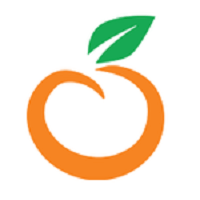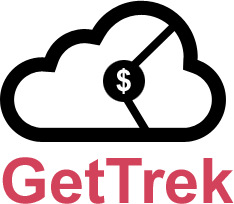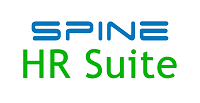Description

OrangeHRM

Wolkepeople
Comprehensive Overview: OrangeHRM vs Wolkepeople
Overview of OrangeHRM and Wolkepeople
a) Primary Functions and Target Markets
OrangeHRM:
Primary Functions: OrangeHRM is a comprehensive Human Resource Management (HRM) solution that offers a variety of features designed to streamline HR operations. Key functionalities include:
- Core HR: Employee information management, organizational charting, and analytics.
- Recruitment: Job posting, applicant tracking, and onboarding.
- Performance Management: Goal setting, feedback mechanisms, and performance review templates.
- Time & Attendance: Timesheets, leave management, and attendance tracking.
- Payroll: Payroll processing and reporting.
- Learning & Development: Training management and employee upskilling.
Target Market: OrangeHRM mainly targets small to mid-sized businesses (SMBs) and offers scalable solutions for larger enterprises. It's known for its customizable and modular approach, which allows businesses to select features according to their specific HR needs.
Wolkepeople:
Primary Functions: Wolkepeople is an HR software that primarily focuses on cloud-based solutions with core functionalities encompassing:
- Employee Management: Centralized database for employee data, documentation, and workflows.
- HR Analytics: Data-driven insights for better decision-making.
- Performance Tracking: Real-time performance metrics and reporting.
- Employee Self-Service: Empowering employees to manage their personal information.
- Recruitment and Onboarding: Streamlined processes for new hires.
Target Market: Wolkepeople positions itself towards medium to large enterprises, particularly those seeking cloud-native solutions for scalable HR management across multiple geographical locations.
b) Market Share and User Base Comparison
Market Share:
-
OrangeHRM holds a significant portion of the market share within the SMB sector due to its flexible pricing and the ability to offer both open-source and enterprise versions. Its presence is notably strong in regions where cost-efficient HR solutions are in demand.
-
Wolkepeople, being more enterprise-focused with its cloud-centric design, captures market share among larger organizations looking for robust scalability and integration within existing IT ecosystems.
User Base:
-
OrangeHRM has a globally diverse user base with businesses from various industries implementing its solutions due to its cost-effectiveness and ease of customization. The open-source version has a widespread community of users contributing to its flexibility and scalability.
-
Wolkepeople's user base primarily comprises larger organizations with more complex HR needs, focusing on industries that require extensive data analytics and cloud interoperability.
c) Key Differentiating Factors
-
Deployment Model:
- OrangeHRM offers both on-premise and cloud-based solutions, catering to a diverse set of customer preferences. In contrast, Wolkepeople focuses exclusively on cloud-based deployment, making it a more attractive option for companies that prioritize cloud-first strategies.
-
Customization and Modularity:
- OrangeHRM is known for its high level of customization, which allows businesses to tailor the system according to their unique requirements, especially with its open-source offering. Wolkepeople, while customizable, emphasizes out-of-the-box functionality and seamless updates due to its SaaS nature.
-
User Interface and Experience:
- OrangeHRM provides a user-friendly interface with a focus on ease of use, which is ideal for SMBs transitioning from traditional HR methods to digital solutions. Wolkepeople, designed with large enterprises in mind, offers a more complex interface with advanced capabilities for managing large datasets and comprehensive HR analytics.
-
Pricing Model:
- OrangeHRM's pricing is competitive, with flexible plans suited for small and growing businesses, including an open-source model that reduces upfront costs. Wolkepeople generally operates on a subscription basis, reflecting its enterprise-oriented service with advanced features and support.
In conclusion, both OrangeHRM and Wolkepeople offer robust HR management solutions, but they cater to different market segments and company sizes, with unique strengths in customization, deployment flexibility, and user experience tailored to their respective audiences.
Contact Info

Year founded :
2006
+1 914-458-4254
Not Available
United States
http://www.linkedin.com/company/orangehrm

Year founded :
Not Available
Not Available
Not Available
Not Available
Not Available
Feature Similarity Breakdown: OrangeHRM, Wolkepeople
OrangeHRM and WolkePeople are both Human Resource Management Systems (HRMS) designed to streamline HR processes, but they may have variations in features and user experience. Here's a breakdown based on your request:
a) Core Features in Common
Both OrangeHRM and WolkePeople typically share several core HRM features, including:
-
Employee Management: Both platforms offer comprehensive employee databases where personal details, employment history, and job roles can be managed.
-
Leave Management: They provide functionalities to manage employee leave and absences, with features to apply, approve, and track leave balances.
-
Time and Attendance Tracking: Each system allows for clock-in/clock-out features, timesheet management, and attendance tracking to monitor working hours effectively.
-
Performance Management: Both tools offer performance appraisal features, including tracking achievements, setting goals, and conducting reviews.
-
Recruitment Management: Basic recruitment tools for job openings, applicant tracking, and resume management are available in both systems.
-
Reporting and Analytics: They provide customizable reports and dashboards to analyze various HR metrics and support data-driven decisions.
-
Employee Self-Service: Basic self-service portals for employees to access pay slips, update personal information, and view leave balances are available.
b) Comparison of User Interfaces
-
OrangeHRM:
- OrangeHRM usually has a more traditional HR software layout with a focus on ease of navigation and user-friendliness.
- The interface is designed to be intuitive, with accessible menus and a modular approach that allows users to customize their dashboard with necessary features.
- It tends to have a more customizable UI with themes and configurable dashboards.
-
WolkePeople:
- WolkePeople may offer a modern and sleek design with a strong emphasis on a clean and intuitive user experience.
- The interface might be more visually appealing with an emphasis on simplicity, potentially offering a user-friendly navigation experience similar to popular consumer web applications.
- It could offer more interactive elements and integrations within its user interface to support seamless operation.
c) Unique Features
-
OrangeHRM:
- Open Source Version: One of OrangeHRM's unique aspects is the availability of an open-source version, allowing smaller businesses or those with specific needs to customize the software extensively.
- Wide Range of Plugins: A broad selection of plugins and modules can be added to extend the functionality of the core product, providing flexibility and customizability.
-
WolkePeople:
- Cloud-Native Architecture: WolkePeople could be built natively for the cloud, potentially providing better integration options, real-time updates, and scalability options.
- Integrated AI Features: It might offer advanced AI-driven analytics and decision-support systems intended to streamline HR tasks and enhance decision-making.
- Enhanced Collaboration Tools: There might be a focus on team collaboration features, such as in-app communication tools, project management integration, or social HR functions.
Conclusion
While they share many common HRMS functionalities, OrangeHRM and WolkePeople may appeal to different audiences depending on specific business needs, preferences for customization, deployment options, and advanced features like AI capabilities or collaboration tools. It's crucial to assess organizational requirements and possibly test both solutions through demos or trials to make an informed choice.
Features

Not Available

Not Available
Best Fit Use Cases: OrangeHRM, Wolkepeople
When considering OrangeHRM and Wolkepeople, it's important to note how they are suited to different types of businesses, projects, and industry needs. Below is an overview of their best fit use cases:
a) OrangeHRM
Use Cases
- Small to Medium-Sized Enterprises (SMEs): OrangeHRM is a popular choice for SMEs due to its flexibility and ease of use. It offers an affordable solution that can scale with the growth of a company.
- Industries with Standard HR Needs: It suits industries with basic to moderate HR management needs, such as retail, manufacturing, and hospitality. The platform provides essential HR functionalities like employee management, leave management, and performance tracking.
- Companies Seeking Customization: Businesses looking for a customizable HR solution will benefit from OrangeHRM's open-source version, which allows modifications and integrations tailored to specific business processes.
Catering to Industry Verticals and Company Sizes
- Versatile Across Verticals: While it mainly serves industries with standard HR requirements, the customizable nature of OrangeHRM ensures it can be adapted to various industry specifications.
- Focus on Growth: Designed for SMEs, it provides the foundation to support growth while keeping the HR processes streamlined.
b) Wolkepeople
Use Cases
- Global and Multi-national Companies: Wolkepeople is typically designed for larger enterprises, particularly those with a global presence requiring sophisticated HR solutions that support multi-country operations.
- Complex HR and Payroll Requirements: Businesses with complex HR functions, such as tiered payroll systems, comprehensive compliance needs, and advanced reporting, will find Wolkepeople advantageous.
- Industries with Unique HR Challenges: Ideal for industries with unique HR challenges, such as finance, healthcare, or technology, which often require customized and robust HR systems.
Catering to Industry Verticals and Company Sizes
- Large and Enterprise-Level Organizations: Tailored for large companies, Wolkepeople's complex system supports high-volume data management and extensive employee bases.
- Specialized Solutions for Specific Industries: It offers tailored solutions that address industry-specific regulations and HR practices, making it preferable for sectors like banking, IT, and healthcare, where compliance and security are paramount.
In summary, the choice between OrangeHRM and Wolkepeople largely depends on the company's size, geographic presence, and the complexity of its HR needs. OrangeHRM serves SMEs with basic to moderate HR needs and a desire for customization, while Wolkepeople is best suited for large, globally-operating enterprises with complex HR challenges. Each solution caters to different company sizes and industry verticals, ensuring that businesses have the tools they need for efficient HR management.
Pricing

Pricing Not Available

Pricing Not Available
Metrics History
Metrics History
Comparing teamSize across companies
Conclusion & Final Verdict: OrangeHRM vs Wolkepeople
To provide a comprehensive conclusion and final verdict for OrangeHRM and Wolkepeople, let’s break down the analysis based on your criteria:
a) Best Overall Value
Overall Value Verdict:
Determining the best overall value between OrangeHRM and Wolkepeople will depend significantly on the specific needs and size of an organization. Generally:
-
OrangeHRM might offer superior value for small to medium-sized enterprises (SMEs) due to its flexibility, scalability, and robust feature set tailored to organizations with limited budgets or those requiring specific customization.
-
Wolkepeople could provide better value for larger enterprises or those in specific industries that require out-of-the-box solutions with comprehensive integration capabilities and analytics, albeit potentially at a higher cost.
b) Pros and Cons
OrangeHRM Pros:
- User-Friendly: Known for its intuitive interface, making it accessible to users with varying levels of tech-savviness.
- Customizable: Offers a high degree of customization to tailor features that fit the specific needs of the organization.
- Cost-Effective: Provides a free and open-source version alongside premium packages, offering financial flexibility.
- Community Support: Strong user community and extensive documentation available for troubleshooting and enhancements.
OrangeHRM Cons:
- Limited Advanced Features: The open-source version may lack some advanced features found in premium packages or other solutions.
- Integration Capabilities: May lag behind in seamless integrations compared to some industry-specific software solutions.
Wolkepeople Pros:
- Comprehensive Solution: Offers a cloud-native approach with a wide array of features, which may include robust analytics and reporting tools.
- Integration: Typically provides excellent integration with other enterprise systems, making it easier for data consistency and workflow management.
- Scalability: Ideal for larger organizations due to its capability to manage extensive user bases and complex organizational structures.
Wolkepeople Cons:
- Higher Cost: Generally more expensive, potentially limiting for smaller businesses with tight budgets.
- Complexity: May require a longer learning curve and more significant time investment for full implementation and training.
c) Specific Recommendations
Recommendations:
-
Needs Assessment: Users should conduct a thorough needs assessment to identify their key HR functionalities and technology requirements. This includes evaluating the complexity of your HR processes, integration needs, and budget constraints.
-
Trial and Testing: If possible, take advantage of any free trials or demos offered by both platforms. This hands-on experience will help determine ease of use, compatibility with existing systems, and whether the platform meets user-specific needs.
-
Scalability Consideration: Consider future growth plans and choose a solution that not only fits current needs but can grow alongside the organization without necessitating a full system overhaul.
-
Community and Support: Evaluate the support provided by each solution, including community forums, customer service responsiveness, and available training resources, to ensure a smooth adoption process.
In conclusion, both OrangeHRM and Wolkepeople present strong HR management solutions tailored to different types of enterprises. The best choice hinges on the size of your organization, specific HR needs, customization capabilities, and budget considerations.
Add to compare
Add similar companies




